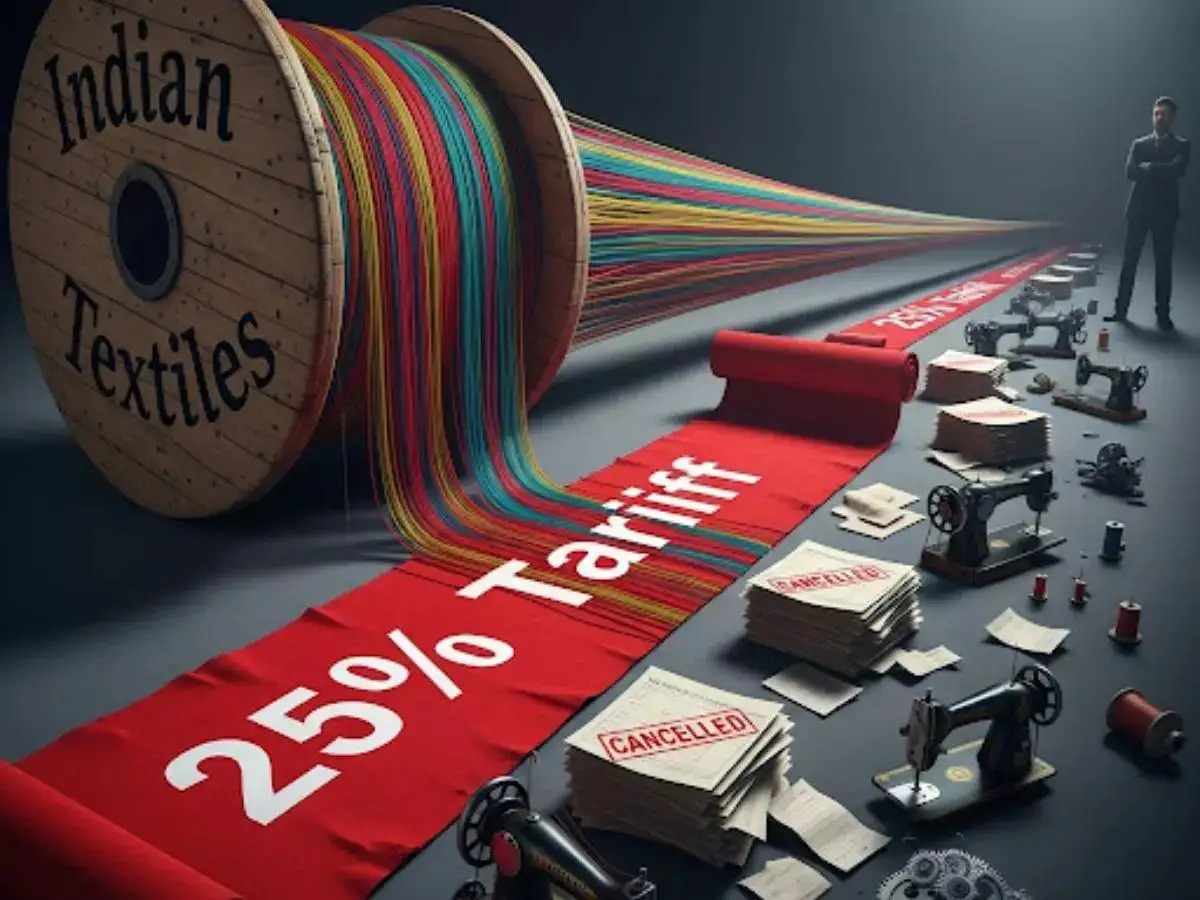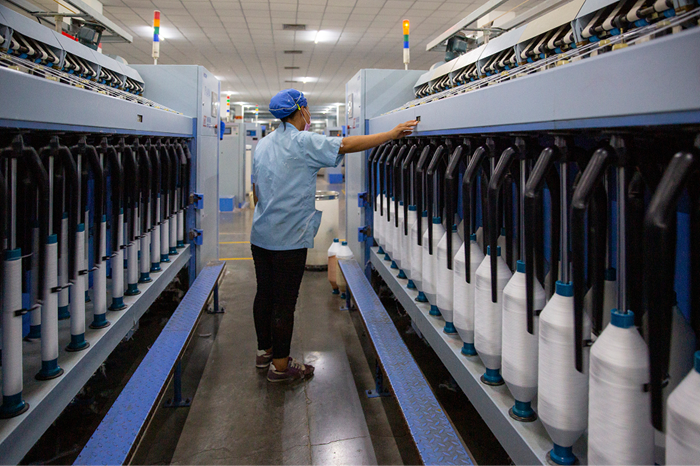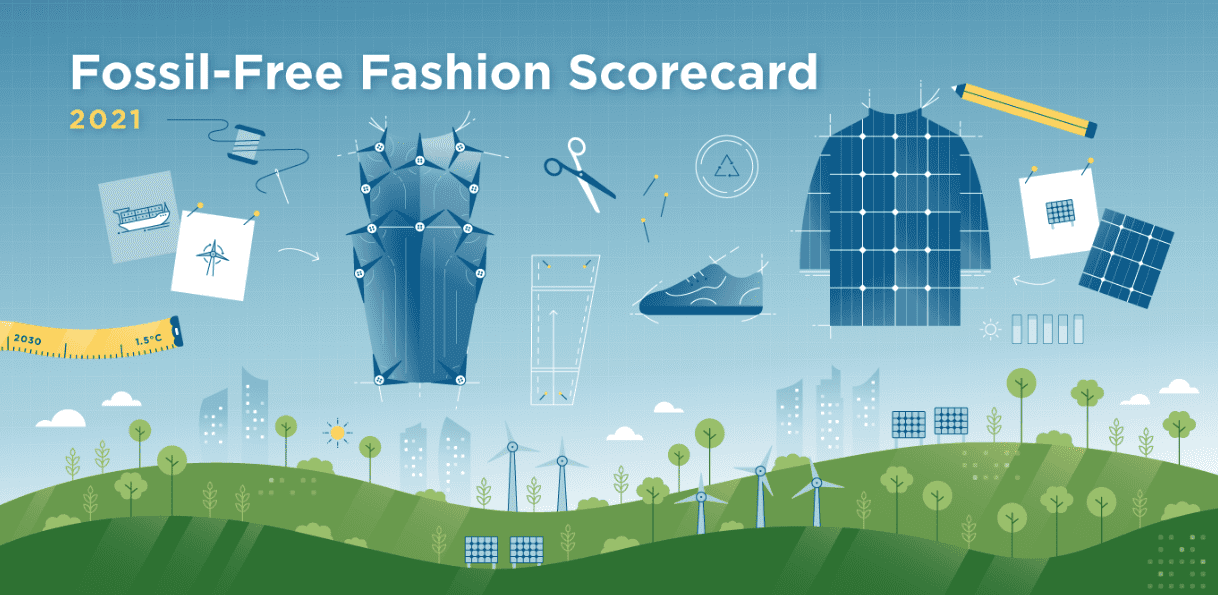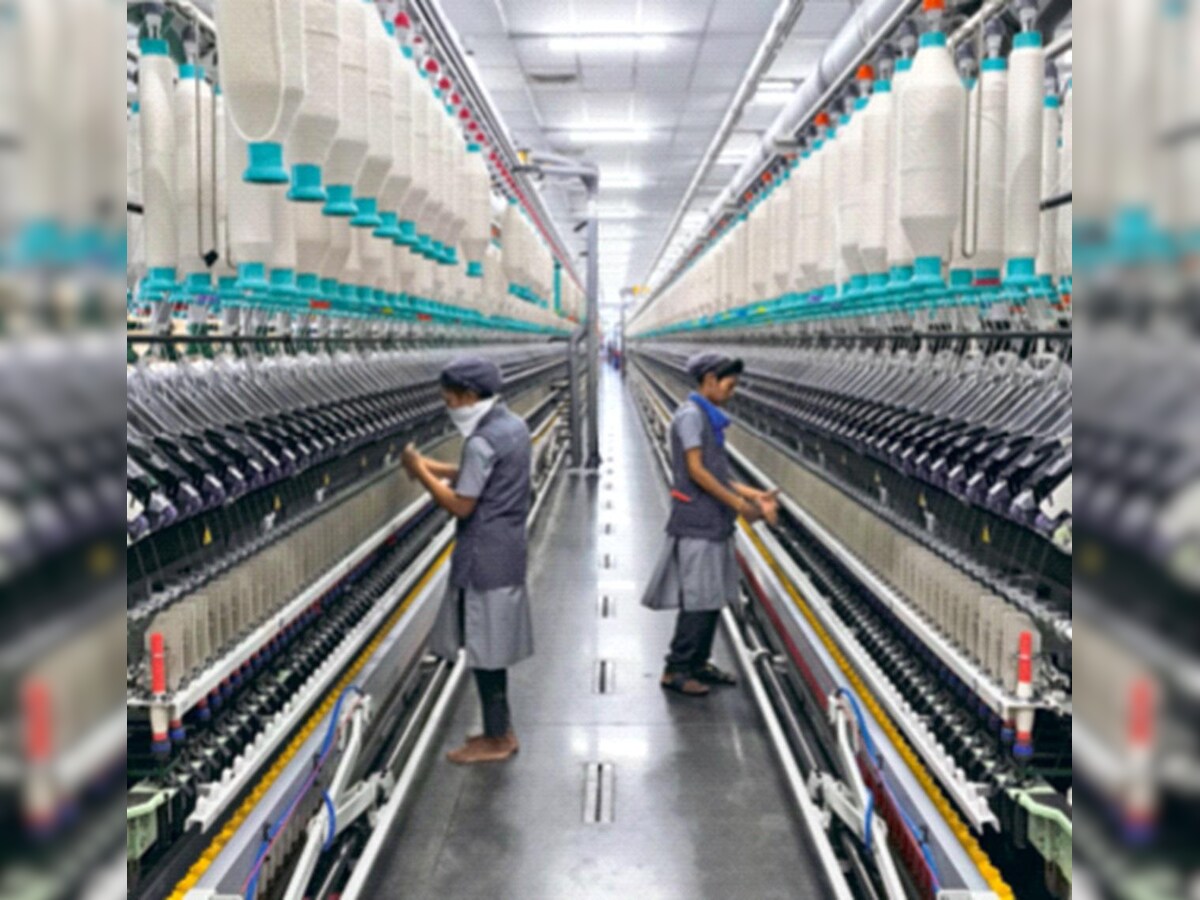FW
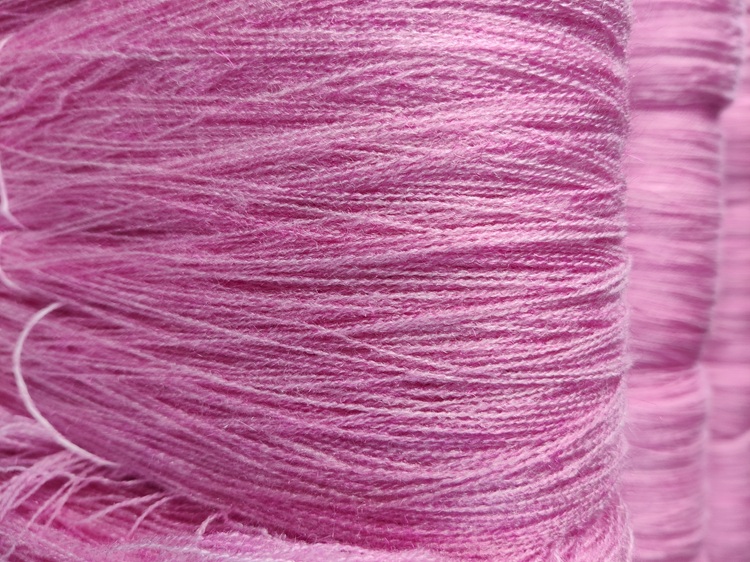
The global Acrylic Staple Fibre (ASF) market, long known for its sensitivity to violent swings in petrochemical feedstocks is facing one of the most profound structural resets in its history. In 2025, while the price of Acrylonitrile (ACN), its primary feedstock, endured one of the steepest collapses in recent memory, the world’s major acrylic fiber producers resisted the old reflex of passing on raw material savings. Instead, they showcased a new playbook: price stability, strategic discipline, and an unquestioned prioritization of supply reliability over cost alignment.
This year marks a turning point where ASF leaders deliberately delinked their pricing from ACN volatility, engineering a new ecosystem where stability, not reactivity has become the core selling proposition. It is a development with sweeping implications for apparel, home furnishings, and technical textiles worldwide.
Market tested by turbulence, redefined by restraint
The first half of 2025 unfolded against a backdrop of global instability. Continued geopolitical aftershocks of the Russia-Ukraine conflict, intermittent shutdowns in Europe’s petrochemical clusters, and sporadic supply disruptions from Asian refineries all contributed to extreme swings in ACN prices. In certain markets, the feedstock fell by as much as 35 per cent in a rapid correction, creating pressure on fiber producers to slash prices.
Historically, that pressure would have resulted in near-linear declines in ASF pricing, as manufacturers competed aggressively for volume. But this time, sentiment shifted. A senior global fiber market analyst summarized the change: “Large buyers are rewarding predictability more than short-term cost gains. In a post-shock world, volatility is the bigger risk, not price.” This subtle but significant shift has enabled downstream manufacturers especially winter apparel exporters, upholstery suppliers, and carpet producers to stabilize their pricing cycles and focus on demand planning rather than firefighting input cost shocks. It has also created a new competitive advantage for the most integrated fiber producers.
When integration becomes insulation
The ability of the world’s largest ASF producers to decouple fiber prices from ACN turbulence is not accidental. It is the result of structural sophistication, vertical integration, and a long-term shift in financial hedging strategies. Industry leaders like Aksa Akrilik in Turkey, Jilin Chemical Fiber in China, and India’s Aditya Birla Group have leveraged their consolidated petrochemical ecosystems, strategic sourcing networks, captive ACN units, and risk-hedging mechanisms to buffer against the volatility that rattles smaller competitors.
To illustrate the scale and strategic differentiation among leaders, the following table captures how key producers gained from their integration models in 2024-25.
Table: Global ASF leader’s advantage and 2024 market position
|
Company/region |
Strategic advantage |
Market share 2024 |
Performance impact |
|
Aksa Akrilik (Turkey) |
Captive ACN capacity; Proximity to EU/MENA markets. |
Largest single-site producer. |
Profitability compressed in 2025 due to ACN spikes, but sustained operating rates better than smaller peers. |
|
Chinese Giants (e.g., Jilin) |
Massive scale, government backing, control over domestic supply. |
Dominates the Asia-Pacific (APAC) region. |
Stable domestic ASF prices reported (e.g., $1.98 USD/kg average in China), despite ACN volatility. |
|
Aditya Birla Group (India) |
Global sourcing network; Diversified MMF portfolio. |
Major South Asian player. |
Focus on high-margin Recycled Acrylic Fibre (Re-ASF) to mitigate volatile virgin ACN costs and align with sustainability mandates. |
Demand, volume, and pricing
With the global ASF market now valued at around $5.72 billion in 2025, demand continues to flow from both traditional and emerging application segments. Winter apparel, sportswear blends, modacrylic flame-retardant textiles, and high-bulk insulation continue to anchor market volumes. The following snapshot provides a clearer understanding of where ASF is headed through 2030.
Table: Global acrylic staple fibre market segmentation (2024 volume)
|
Segment |
Volume share (approx.) |
CAGR forecast (2025-30) |
Primary driver |
|
Apparel (Sweaters, Sportswear) |
58.85% |
3.50% |
Wool-like feel, affordability, easy-care. |
|
Home Furnishing (Carpets, Blankets) |
20.00% |
3.00% |
Durability, flame retardancy (in modacrylic), vivid colors. |
|
Industrial/Technical (Filtration, Auto) |
Remainder |
4.02% (Fastest) |
Chemical resistance, high-bulk insulation, specialized performance. |
Despite the dramatic ACN correction, ASF prices across China, Vietnam, and Indonesia saw only a marginal decline of 2.5-3 per cent in Q3 2025. This narrow adjustment reinforces the narrative of disciplined pricing, as producers absorb shocks rather than replicate them downstream.
A market reinvented by sustainability and specialty innovation
Behind the newly established pricing power lies another force is quietly reshaping the ASF market: a shift towards sustainability, recycling, and bio-based raw material innovation.
Recycled Acrylic (Re-ASF) emerges strong: With governments in the EU, Japan, and North America tightening Extended Producer Responsibility (EPR) mandates, global brands now actively seek recycled acrylic fiber for knitwear and home textiles. This demand allows manufacturers to invest in technologies that extract and purify polyacrylonitrile (PAN) from textile waste streams.
A notable consequence is that Re-ASF operates on an entirely different cost logic, one decoupled from virgin ACN markets. For leading producers, this creates a dual benefit: insulation from petrochemical swings and access to higher-margin sustainability-driven orders.
Bio-Based ACN the next frontier: R&D-led companies, especially in Japan and Europe, are pushing aggressively toward bio-based ACN. Asahi Kasei’s development of biomass-derived propylene certified under ISCC PLUS marks a landmark achievement. This innovation not only answers environmental scrutiny but also forms a long-term hedge against petroleum price volatility, an important factor as crude oil markets become more unpredictable due to climate transition policies.
Moving from commodity to specialty powerhouse
Taken together, these developments, price discipline, structural integration, sustainability pivots, and specialty innovation signify a clear evolution. The ASF industry is no longer playing the role of a commodity chemical sub-sector reacting to petrochemical shocks. Instead, it is emerging as a specialty materials category where value creation stems from control, consistency, technology, and environmental compliance.
The decoupling of ASF pricing from ACN volatility is not a temporary anomaly; it is a strategic reset. The global acrylic fiber market has entered a new era, one in which power rests with producers who can offer reliability in an increasingly unpredictable world. In that sense, 2025 will be remembered not for the ACN crash but for the moment when the world’s fiber giants turned volatility into an advantage and redefined the future of synthetics.
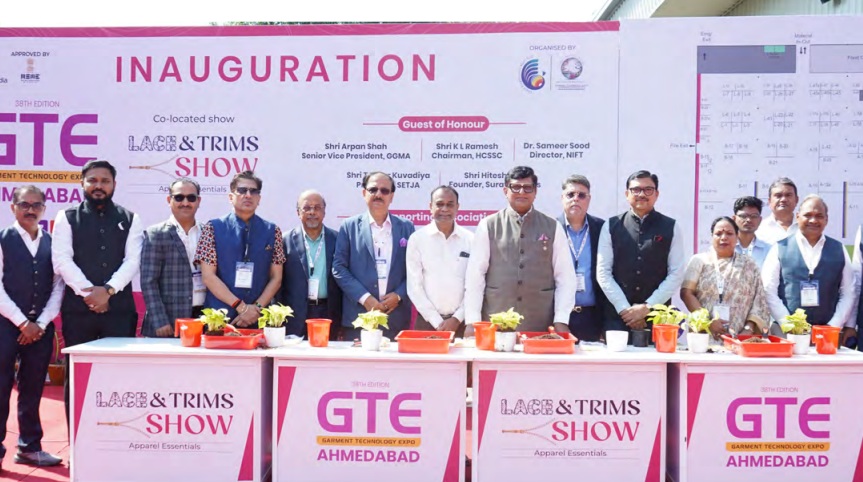
Jointly organized by Garment Technology Expo and India Exposition Mart(IEML), the 38th edition of the Garment Technology Expo (GTE) proved to be a powerful and impactful event.
The event was held against a backdrop of global challenges, serving as a crucial catalyst and injecting exceptional dynamism into the garment and apparel manufacturing industry. It received an overwhelming participation from influential garment manufacturers, reaffirming the strong trust in its position as the premier event for showcasing apparel technology.
Technology and innovation at the forefront
The 2025 edition focused on technology-based machines and solutions. Attendees were treated to continuous live demonstrations, which proved instrumental in facilitating highly engaging and productive buyer interactions. This focus on practical, real-time technology showcases resulted in a high volume of quality inquiries from garment manufacturers, exporters, and crucial sourcing decision-makers.
The expo focused on key sectors that drive the industry’s modernization including garment sewing industries, embroidery solutions, digital printing (textiles), automation, CAD/CAM, garment machinery spare parts and testing and machinery equipment.
Robust industry engagement
Attracting over 9,700 business visitors, GTE 2025 proved to be a hub of intense business activity. The event created an unprecedented environment for networking and commerce. It attracted highly targeted visitors which included procurement teams, major garment manufacturers, exporters, buying houses, and various institutional representatives.
Crucially, the expo fostered significant business engagement, particularly benefiting smaller enterprises. MSME (Micro, Small, and Medium Enterprises) units were able to explore opportunities and potentially benefit under the government’s PMS Scheme. The core factor driving successful business outcomes was the one-to-one interaction facilitated between buyers and sellers, often centered around the live machine demonstrations. This direct engagement was paramount in generating a high volume of inquiries and confirmed orders throughout the three-day event.
Several high-level industry delegations from major companies across regions like Gujarat, Rajasthan, and Mumbai also visited the show. The presence of buying houses and new startups further diversified the attendance, signaling strong interest in technological upgrades and market entry. In particular, visitors from West India utilized the exhibition to gain firsthand knowledge and prepare for future GTE editions.
Extensive media reach
GTE 2025 received extensive and favorable media coverage, significantly amplifying the event's reach and impact across the national landscape. Major news outlets such as My Nation, United News of India, Lokmat Times, Ahmedabad Mirror, and numerous trade media platforms covered the developments. The media campaign was also immensely successful digitally, with social media campaigns crossing millions of impressions. Highlight reels, quotes from dignitaries, and exhibitor showcases trended across various platforms, reinforcing GTE’s visibility and influence.
Future editions
Following this successful run, the organizers have announced the forthcoming editions of the Garment Technology Expo. These include:
• Annual Mega Edition (GTE’26): Scheduled for March 20–23, 2026, in Greater Noida.
• Biannual Regional Edition: Set for September 2026 in Bengaluru.
Both upcoming shows will continue the highly strategic inclusion of a co-located Lace & Trims Show, recognizing these as essential components for comprehensive apparel production and further enhancing the value proposition for all attendees. The sustained success of the 38th edition demonstrates the industry’s hunger for innovation and its confidence in GTE as the platform to meet its technological needs.
Bestseller has inaugurated its highly anticipated new flagship store in Copenhagen. Housed within a historically preserved building on Gammeltorv, the opening serves as a powerful statement regarding the strategic importance the company places on the physical retail experience.
The creation of the store involved a six-year, meticulous renovation process focused on preserving the architectural façade. This significant investment in the consumer experience is specifically designed to combat the volatility often seen in the e-commerce sector. The move directly addresses Bestseller’s acknowledged need for continued ‘top-line growth’ to sustain its business momentum.
Louise Ejersbo Jensen, Retail Manager, Bestseller, stated, though long-awaited and many years in the making, the store has been built to be large and beautiful.
This new two-story location is designed to serve as a premium, unified showcase for all of Bestseller men’s and women’s brands. By blending these various lines under one roof, the store offers customers a holistic and streamlined shopping journey, moving beyond separated brand experiences.
The launch of this flagship is a key component of Bestseller’s broader post-pandemic growth strategy. By investing heavily in a highly visible, architecturally significant retail space in the heart of its home market, the company utilizes the store as a major brand experience center.
A leading global producer of wood-based specialty fibers known for its sustainable Tencel Lyocell and Modal fibers, the Lenzing Group is placing a renewed strategic emphasis on supply chain transparency and combating textile counterfeiting.
This focus comes amid a leadership change following the departure of Rohit Aggarwal, CEO effective January 31, 2026, due to personal reasons. While the Supervisory Board remains confident in the firm’s positive 2025 EBITDA outlook, its immediate priority is appointing a successor who can champion this technology-driven growth agenda.
Lenzing’s core challenge in the competitive apparel and textile markets is ensuring brand integrity and verifying its sustainable claims. Its solution is a sophisticated, integrated digital traceability system developed with its partner, Textile Genesis.
This system creates a ‘digital twin’ for every kilogram of sustainable fiber. It tracks products, such as Lenzing Ecovero viscose, from the initial raw material stage all the way to the final retail product. This technology provides plagiarism-free assurance and verifiable data for sustainable sourcing claims.
The company is also maintaining an ambitious goal of generating over €180 million in cost savings by the end of 2025. The aggressive push for transparency and circularity are keys to Lenzing’s future. This strategy is epitomized by its Refibra technology, which involves blending wood pulp with post-consumer textile waste to create new fibers.
By leading in sustainable innovation, Lenzing is positioning itself to capitalize on the robust market growth projected for the Lyocell segment, which is expected to grow by 20 per cent annually. This dedication to traceable, circular fibers is seen as essential for long-term financial success and cementing the company's status as a leader in the sustainable textile industry.
Reinforcing its commitment to physical retail dominance in Central and Eastern Europe (CEE), Primark has opened its eighth store in Poland and the 18th across the CEE region. This strategic expansion signals the brand's confidence in a region where consumers remain highly engaged with in-store shopping.
This aggressive rollout is part of a deliberate strategy to capture market share in countries like Poland, which offer favorable economic growth and a large, aspirational consumer base. The Polish market, with established stores already operating in major cities such as Warsaw, Poznań, Kraków, and Katowice, has proven to be a pivotal and successful entry point for the brand.
The newly opened store features Primark’s latest store concept and design. This investment in the physical environment is critical to the brand’s long-term strategy: delivering a high-quality, engaging in-store experience that competes with mid-market rivals while strictly maintaining its core value proposition.
Given Primark's established lack of a full e-commerce offering (relying instead on a limited Click & Collect trial), its physical footprint serves as its ultimate competitive advantage. The expansive store network reinforces the brand's core mantra that ‘Everyone is welcome.’
Primark is aggressively targeting significant white-space opportunities across Europe. While the financial outlook for FY26 is cautious regarding overall consumer demand, the planned store expansion is projected to add approximately 4 per cent to the company’s total sales growth annually.
The strategic rollout in Poland, a high-growth market, not only drives direct revenue but also strengthens the brand's logistics and operational framework across the entire CEE region. This confirms Central and Eastern Europe as a primary driver of Primark’s future international revenue and profitability.
Munich Airport (MUC) has upgraded its retail offerings in Terminal 2 by developing a new 480 sq m luxury fashion cluster near Gate H. Operated by eurotrade, this curated expansion, introduces four premium units: Boss (the largest unit at 183 sq m), Marc O’Polo (relocated to a larger, more exclusive 128 sq m space), Eton, and Luxury Sunglasses.
This deliberate grouping is designed to anchor MUC as a key fashion destination within the premium-casual segment, specifically targeting and attracting high-spending international travelers.
The relocation and expansion of established partners, such as Boss (a eurotrade collaborator since 1997) and Marc O’Polo (a partner since 2003), highlight the airport's strategy to maximize the "duty-free" and tax-free appeal for premium goods.
Maria Dahlhaus, Head-Commercial Activities, Munich Airport, notes, the expansion is an important step toward enhancing the passenger experience. It combines international brand expertise with a modern, open store design. This commitment to a high-quality physical shopping environment is critical, as the global airport retail market is projected to grow at a CAGR of 5.6 per cent through 2032, driven by increasing passenger traffic and demand for luxury products.
This specific investment in premium apparel and accessories is a direct strategy to capitalize on the growing intercontinental traffic at MUC. Long-haul passengers, particularly those arriving from Asia and the Middle East, are statistically known for higher spending in the fashion and luxury accessories category.
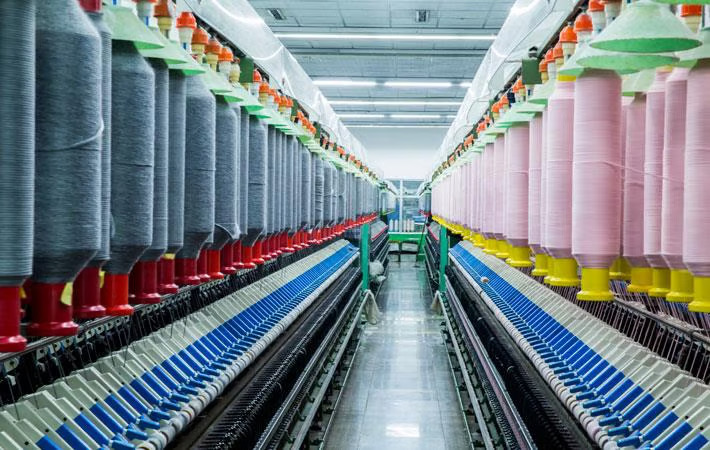
For decades, cotton has defined India’s manufacturing identity and policy priorities, even though global demand has shifted towards synthetics. Today, Man-Made Fibres (MMF) make-up nearly three-fourths of the world’s fibre consumption, forming the raw material backbone for everything from athleisure to outdoor performance gear. India’s export competitiveness has suffered because it has remained heavily skewed towards natural fibres, limiting its participation in the fastest-growing apparel categories.
This imbalance is now beginning to correct itself, led by one of India’s most influential integrated textile players, Vardhman Textiles Limited (VTL). The company’s Rs 350 crore investment in a state-of-the-art synthetic performance fabric plant in Baddi marks a decisive step toward building domestic capability for advanced technical textiles. More importantly, it highlights a shift to reduce India’s longstanding dependence on imported high-performance fabrics, which had previously placed local garment exporters at an inherent disadvantage compared to Vietnam, China, and Indonesia.
Rebuilding value chain yarn upwards
The most important challenge for India’s technical textile ambitions has been the fragmentation of its value chain. While the country has strong spinning capabilities, its ability to produce specialised performance fabrics, particularly the complex weaves and filament blends needed by global brands has remained limited. Vardhman’s new plant is designed to address this systemic gap by creating a fully integrated pipeline that begins at the yarn stage and flows seamlessly into MMF-based woven fabric manufacturing.
The company’s existing spinning infrastructure of over 1.2 million equivalent spindles, capable of producing a wide range of cotton, polyester, acrylic, and blend yarns, serves as the foundation for this integration. The new facility builds on this base with high-speed water-jet and air-jet looms, enabling the production of fine-denier, high-stretch, abrasion-resistant and tightly constructed fabrics. These fabrics are essential for the world’s fastest-growing apparel segments viz, sportswear, activewear, outdoor gear, and performance-driven workwear, categories that have increasingly shaped consumer behaviour in the US, Europe, and the UK.
By positioning these capabilities under one operational umbrella, Vardhman is effectively establishing one of India’s first scalable platforms for premium performance textiles, an area that has long been dominated by East Asian manufacturers.
Technology that bridges the global gap
The standout differentiator at the Baddi plant is the introduction of one of India’s earliest double-head coating systems, capable of processing both solvent-based and water-based coatings. Unlike conventional units that offer only single-process finishes, this dual-coating capability expands the range of functional treatments that can be applied to fabrics. These include waterproof and breathable membranes, wind-resistant layers, stain-repellent surfaces, and bonded composites used in multi-layered gear.
This technological sophistication brings India closer to the finishing standards required by global outdoor, athleisure, and technical workwear brands. Experts say, Decathlon was involved from the conceptualisation phase of the plant, signalling buyer confidence in India’s emerging MMF ecosystem. The development is a shift in sourcing patterns, where global brands, traditionally reliant on Chinese and Korean mills are now starting to evaluate India not just as a garment supplier, but as a viable materials hub.
All about global fibre demand gaps
The following snapshot illustrates the mismatch between global demand and India’s historic fibre mix:
Table: Global and Indian fibre market comparison
|
Fibre Type |
Global share (approx.) |
India's share (approx.) |
Gaps/challenges for India |
|
Man-Made Fibers (MMF) |
75% |
40-45% |
High dependence on cotton affects competitiveness in the global market. |
|
Natural Fibres |
25% |
55-60% |
Oversupply in low-margin cotton categories restricts value-addition and diversification. |
This data highlights a long-standing reality: India’s dominance in cotton does not translate into competitive advantage in the global apparel marketplace, because modern fashion is primarily synthetic-rich. From yoga leggings and gym tops to outdoor jackets and industrial uniforms, the global demand is driven largely by polyester and nylon blends that combine comfort, durability and performance. Vardhman’s move into MMF aligns India with this global trend line and reduces the structural handicap created by an unbalanced fibre portfolio.
Relief for apparel exporters
Indian apparel manufacturers have long been constrained by the need to import synthetic stretch fabrics and technical nylon blends, often waiting eight to twelve weeks for shipments to arrive from China or Korea. These long lead times have hindered their ability to cater to fast-fashion timelines and respond quickly to seasonal design changes.
With Vardhman’s new MMF facility now operational, exporters gain immediate access to domestically produced high-performance fabrics, reducing sourcing delays by nearly half. This shift fundamentally changes the competitiveness of manufacturers serving Western markets, where retailers increasingly demand shorter delivery cycles and more flexible product assortments.
The plant’s initial production capacity of 1.5 million meters per month, focused primarily on polyester-rich blends with a supporting share of nylon, directly meets the raw material needs of India’s most dynamic apparel segments. For exporters targeting the US, EU, and UK markets that collectively represent about two-thirds of India’s apparel shipments this supply-chain consolidation could be transformative.
Table: India's apparel export markets and MMF opportunity
|
Market |
Share of India’s apparel exports (approx.) |
Categories impacted by MMF/synthetics |
|
US |
27% |
Athleisure, Performance Basics, Synthetics |
|
EU |
33% |
Outdoor Apparel, Fast Fashion |
|
UK |
6% |
Sportswear, Layered Garments |
|
Total Western Share |
66% |
All High-Stretch and Coated Fabrics |
A closer look at India’s top export destinations underscores the importance of the MMF transformation. Western buyers favour performance-driven clothing, which relies heavily on synthetic materials. As India strengthens its domestic MMF fabric capabilities, it becomes better positioned to service these markets with both cost efficiency and speed two non-negotiable demands in the global supply chain.
Financial muscle behind the expansion
The scale of Vardhman’s synthetic-fabric ambitions is underpinned by the company’s robust financial base. Although the global textile market has seen volatility, the company recorded a net profit of Rs 187.76 crore in Q2 FY26, a modest decline despite industry pressures. Importantly, the company’s EBITDA margin grew 13.5 per cent, signalling a shift toward higher-value product categories. With a current ratio of 4.6x in FY25, Vardhman maintains a strong liquidity position, giving it the resilience and flexibility needed to pursue long-term investments.
The Baddi MMF unit is part of a broader Rs 2,000 crore capex programme that includes spinning modernisation, fabric capacity expansion, and the development of new technical textile capabilities. The company anticipates the new plant reaching 20-30 per cent utilisation by Q4 FY26, with the ramp-up expected to meaningfully contribute to revenue and margins from FY27 onward.
Table: Vardhman’s legacy and its next growth chapter
|
Market |
Share of India’s apparel exports (approx.) |
Categories impacted by MMF/synthetics |
|
US |
27% |
Athleisure, Performance Basics, Synthetics |
|
EU |
33% |
Outdoor Apparel, Fast Fashion |
|
UK |
6% |
Sportswear, Layered Garments |
|
Total Western Share |
66% |
All High-Stretch and Coated Fabrics |
Vardhman’s heritage is deeply rooted in yarn manufacturing, yet the company has consistently expanded into higher-value segments over the decades. With a 43 per cent export share in FY25, the company is uniquely positioned to benefit from the global pivot toward synthetic-rich categories. Its future strategy places significant focus on MMF leadership, signalling a deliberate shift away from traditional, lower-margin product lines.
A structural reset for India’s global position
What Vardhman has initiated is not merely the commissioning of another textile mill; it is a structural reset of India’s fibre identity. The timing is aligned with national policy measures such as the PLI scheme, the establishment of PM MITRA parks, and ongoing discussions to rationalise duties on synthetic fibres. If other large players follow Vardhman’s lead, India could finally evolve from a cotton-centric manufacturing base to a full-spectrum textile powerhouse capable of servicing modern fashion’s most essential material needs. With the Baddi plant now operational, the MMF transition is more than an industry aspiration, it is a reality unfolding across shop floors, coating lines, and weaving sheds. And with that, India’s long-awaited fibre correction finally has momentum.
Entering the highly competitive fashion retail technology landscape, Perplexity AI has launched the new Rapid-Fire Virtual Try-On feature. Available to the company's Pro and Max subscribers, this innovation uses generative AI to instantly create a digital avatar from a customer’s photo, allowing for a near-instant preview of how clothing will drape and fit. The most significant aspect of this launch is its laser focus on speed and boosting conversion in the trillion-dollar e-commerce apparel sector.
The largest hurdle in online fashion retail is the staggering high rate of returns, which averages around 30 per cent for online apparel purchases. Virtual Try-On (VTO) technologies are explicitly designed to mitigate this friction point. Case studies from other retailers demonstrate that successful VTO adoption can lead to a reduction in fit-related returns by up to 64 per cent and an increase in conversion rates by 10–90 per cent for engaged users.
Perplexity's key advantage is the speed of its simulation. By prioritizing a rapid ‘fit check’ over the more complex, slower, full-outfit visualizations offered by competitors, the tool directly addresses the consumer's need for instant gratification, thereby boosting buyer confidence at the critical moment of purchase.
This product launch confirms that Augmented Reality (AR) and Generative AI are now non-negotiable strategic infrastructure for modern fashion retailers. Perplexity is leveraging its core AI strengths to compete with established e-commerce players and large technology firms.
While the feature currently focuses on individual items, its underlying computer vision and fabric simulation capabilities are perfectly poised to capture the tech-savvy Gen Z and Millennial shoppers who demand hyper-personalized, immersive experiences. For retail brands, integrating such tools is paramount to unlocking profit by solving the immense logistical and environmental burden of returns, ultimately positioning AI as the new, high-efficiency fitting room.
Italian luxury powerhouse Valentino is facing a severe reputational crisis after releasing an AI-generated campaign for its new 'DeVain' handbag. The visuals sparked an immediate and intense backlash from loyal consumers and the creative community, marking a critical flashpoint in the luxury sector's uneasy adoption of generative AI.
The controversial imagery, which features distorted, surreal elements and models seemingly emerging from gold hardware, was widely condemned across social media platforms. Critics denounced the visuals as ‘disturbing,’ ‘lazy,’ and ‘cheap.’
For a brand like Valentino, which trades on the core principles of haute couture and human artistry- values intrinsically linked to hand-stitched embroidery and meticulous craftsmanship—outsourcing its visual narrative to a machine is perceived as a fundamental disconnect. Research confirms, when luxury brands disclose the use of AI in advertising, consumers often evaluate the resulting ads as being made with lower effort. This perception directly damages the brand's authenticity.
The backlash risks eroding the very foundation of Valentino's brand equity at a challenging time. Its parent company is working to sustain revenue against luxury market deceleration and is already dealing with a 22 per cent drop in operating profit in 2024.
Valentino, which generates 95 per cent of its online sales from Fashion and is aggressively expanding its high-touch, experiential retail network - including new flagship openings in Riyadh and Tokyo in 2025 - is clearly prioritizing long-term relevance. However, this failed AI experiment demonstrates the significant risk of prioritizing cost-cutting efficiency over the emotional resonance that defines the luxury consumer experience.
Prime Minister Mostafa Madbouly announced, some of the top priorities of the Egyptian Government include aggressively pursuing national textile-industry development projects to substantially boost production capacity, alongside reviewing plans to better utilize state-owned assets.
Madbouly made these remarks during a recent meeting with a high-level delegation, including Ahmed Kouchouk, Minister of Finance; Adnan Fangari, Minister of Justice; Mohamed Shimi, Minister of Public Business Sector; Ahmed Khaled Hassan, Alexandria Governor and other relevant ministry officials.
Mohamed el Homosany, Cabinet Spokesperson stated, the meeting thoroughly reviewed the progress of upgrading textile companies nationwide. Officials presented detailed components of the development, including completion rates, target production capacities, and specific plans to secure the necessary cotton and raw materials.
The government noted, covering over one million sq m, these extensive upgrade projects include new construction and the installation of modern machinery.
The overarching development plan aims to drastically increase Egypt’s annual yarn production from 29,000 tons to 133,000 tons. It aims to increase fabric production from 25 million sq m to 198 million sq m and production of ready-made garments from 8 million to 40 million pieces.
According to the spokesperson, these targets underscore the government’s commitment to transforming the sector and achieving industrial self-sufficiency and export growth.



